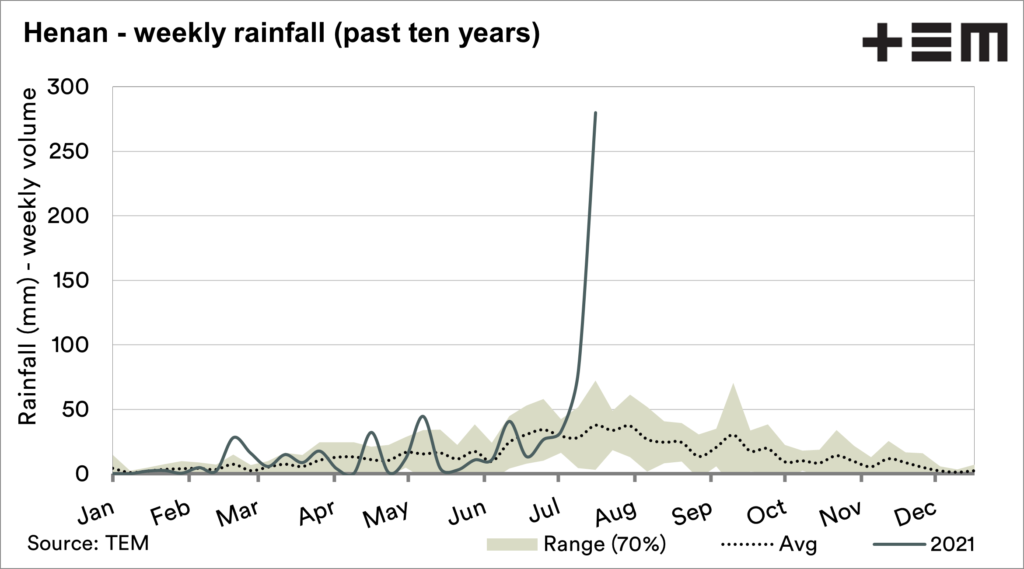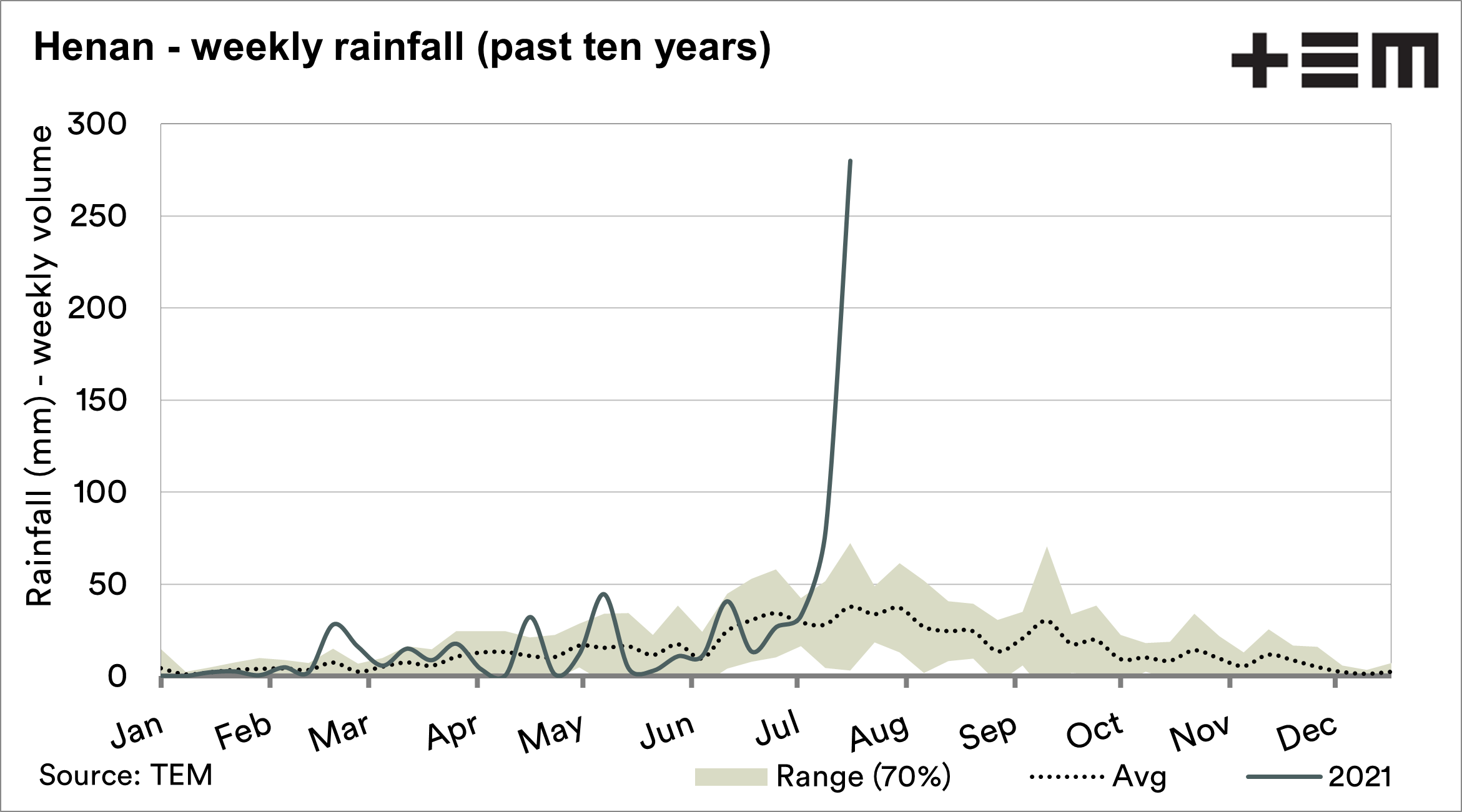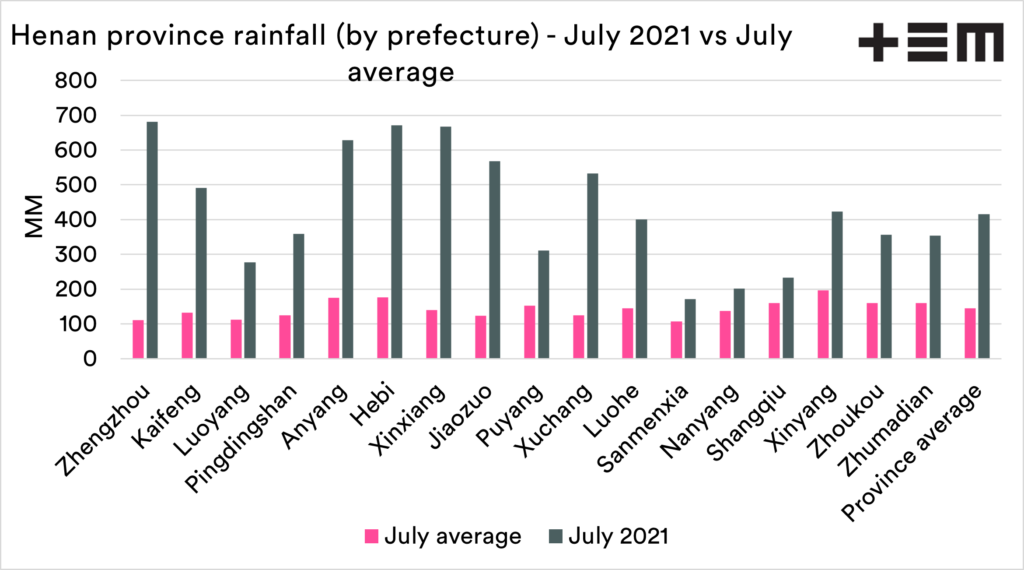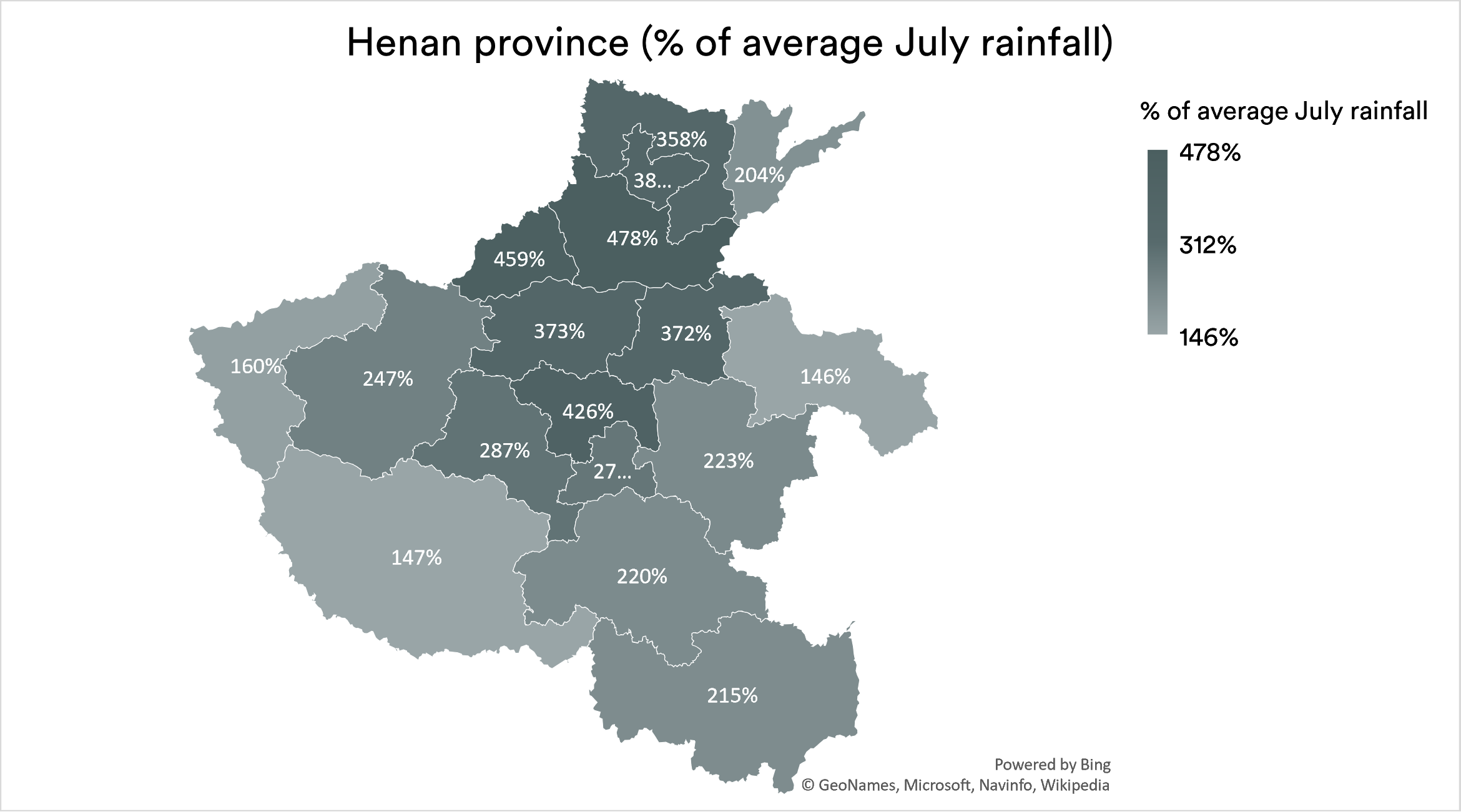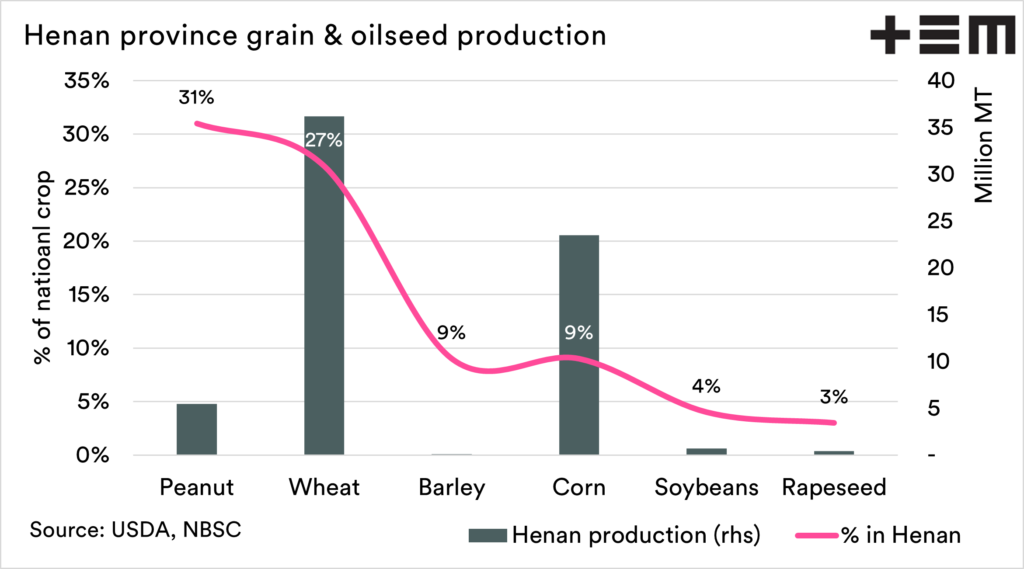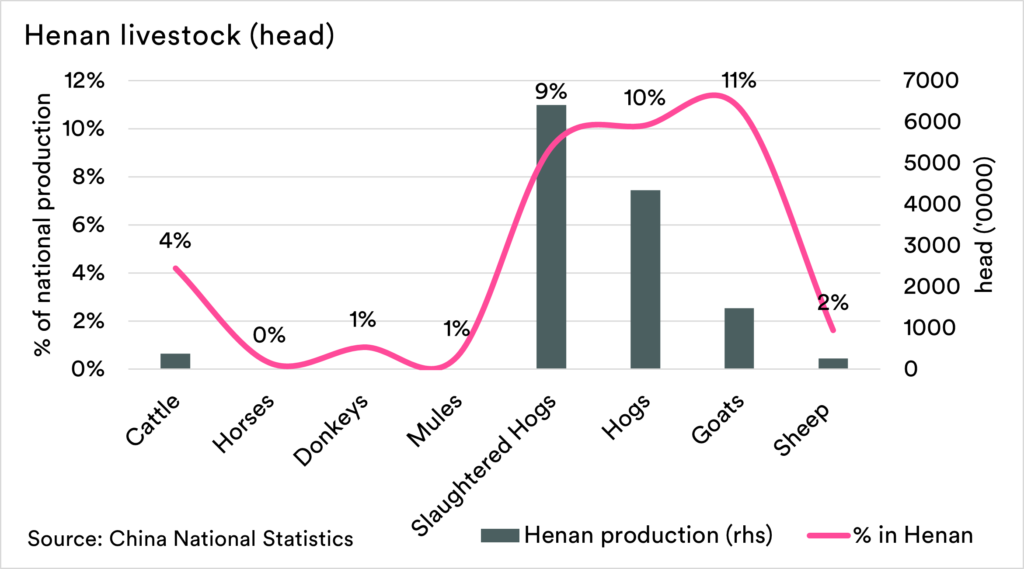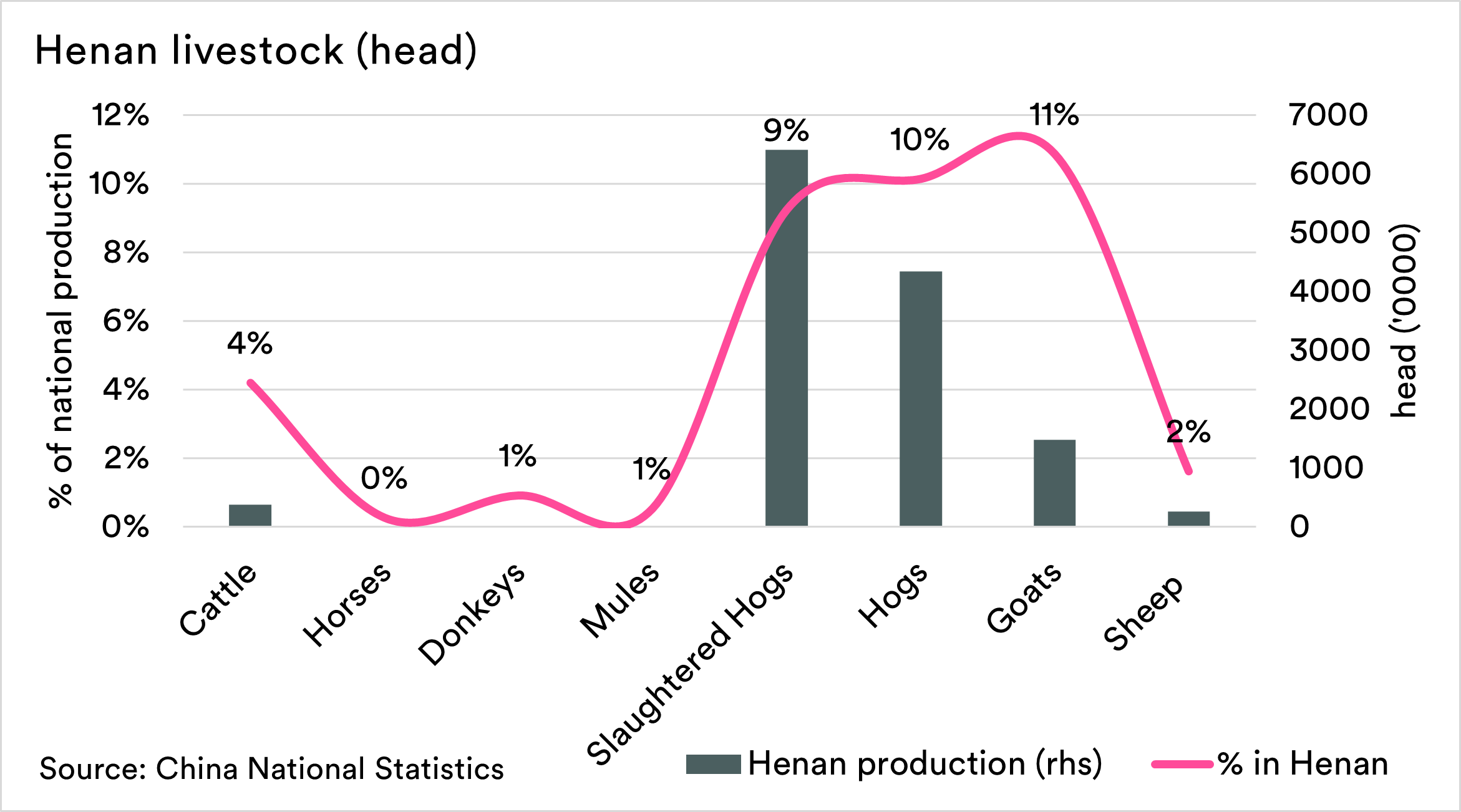Chinese floods bring devastation

The Snapshot
- The rainfall in Henan has been biblical, with floods in the major cities.
- Zhengzhou has received 6x the average July rainfall, with much of it falling in one day.
- Across the 17 prefectures of the state they received three times the average July rainfall this month.
- Henan is responsible for 27% of the wheat crop, and 9% of the corn crop.
- The wheat crop there has already been harvested, but corn won’t be harvested until August-September.
- Henan has 4% of the nations cattle herd and 10% of the hogs.
- It will be hard to get an accurate gauge on the extent of any damage to the Chinese crop or livestock herd.
The Detail
The eyes of the world have been on China in the past two years, as they increase their import program of a wide range of commodities (see here).
So what happens in China has a significant impact on global ag markets. Last week saw some pretty horrific flood footage from the Henan province (see here, here & here). We thought we’d look at the amount of rainfall and what Henan produces.
So how dramatic was the rainfall?
The rainfall was very dramatic; the first chart below shows the seasonality of rainfall in the Henan province as an average of 17 prefectures.
July and August tend to have the highest rainfall, so seasonally, it’s not a surprise to see heavy rainfall. The extent of the rain this month is almost biblical.
Henan is a large area at 167,000km², or slightly larger than Tunisia (or twice the size of Scotland). As we know, rainfall can be quite localised. We often see storm systems come through and hit one area, but leave another dry.
The chart below shows the prefecture rainfall for this July, versus the average July rainfall. Heavy rainfall has been felt across most of the Henan province, with Zhengzhou bearing the brunt of the rain, with six times the average rainfall – most of which fell on the same day.
On average, the 17 prefectures received three times the average July rainfall. The rainfall between these cities is likely to have been strong as well. The map below shows the rainfall for each of the prefectures.
The northern part of the region received the highest rainfall; then it fell as the weather flowed south, albeit with significant falls compared to normal, and most arriving within a short period.
What does Henan produce?
The chart below shows the percentage of grains and oilseeds produced in the Henan province. Apart from peanuts, wheat is the largest crop in Henan as a percentage of the Chinese national crop.
At this stage of the season, the wheat crop has been harvested. Any damage will be limited to stored crops. The average production in the Henan province is 36mmt.
The corn crop, however, is not yet ready to be harvested and could face some damage.
The corn crop based on USDA data equates to 23mmt on average. China has been importing large quantities of corn during the past two years. It’s always hard to get a handle on what is happening in China. Still, significant damage in Henan would impact the nations supply and demand picture.
- Peanut (31%)
- Wheat (27%)
- Barley (9%)
- Corn (9%)
- Soybeans (4%)
- Rapeseed (3%)
What about livestock?
There are concerns about the reporting of livestock numbers shared by the Chinese government (see here). However, there isn’t much choice but to use it. We have gathered the data from the most recent Chinese statistical yearbook (2019).
Firstly cattle, interestingly, Henan has dropped down the rankings in recent years. According to Chinese government data, the region contained 8.8m head of cattle in 2017 and dropped to 3.7m head in 2018. This is a huge drop and is probably worthy of an article in its own right.
The most significant impact may be felt in the pork herd, with 10% of China’s pigs held within the province. This is terrible timing at a period when China is attempting to rebuild their herd. There have already been images of pig carcases floating in the water, which can spread diseases, including ASF.
If we remember back to 2019, the floods in Queensland resulted in 600,000 deaths (see here), and a hurricane in North Carolina killed thousands of pigs and millions of birds in 2018 (see here).
It’s going to be hard to get a handle on the level of losses, but the potential loss could be reasonably high.

